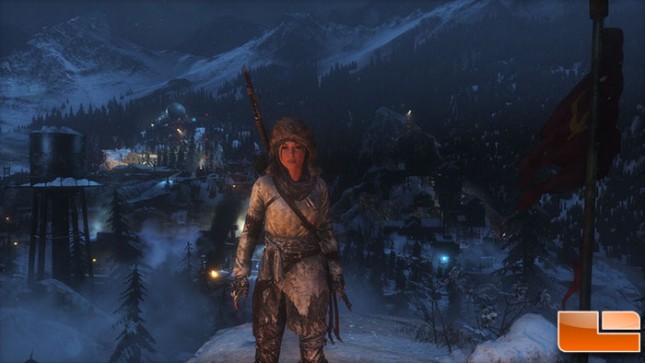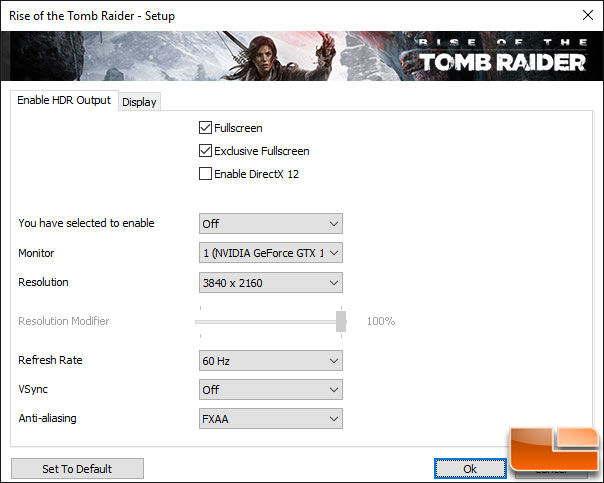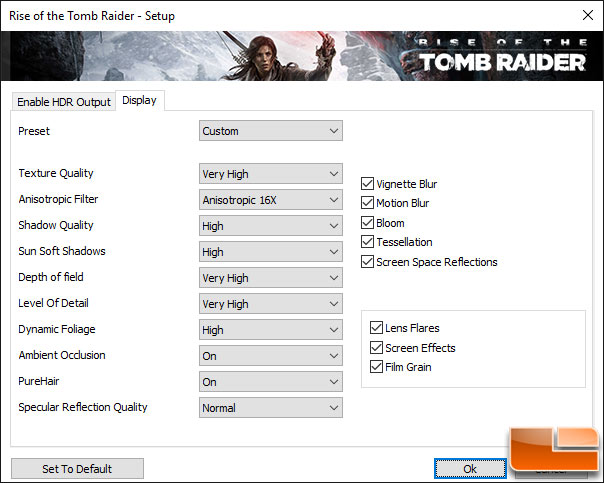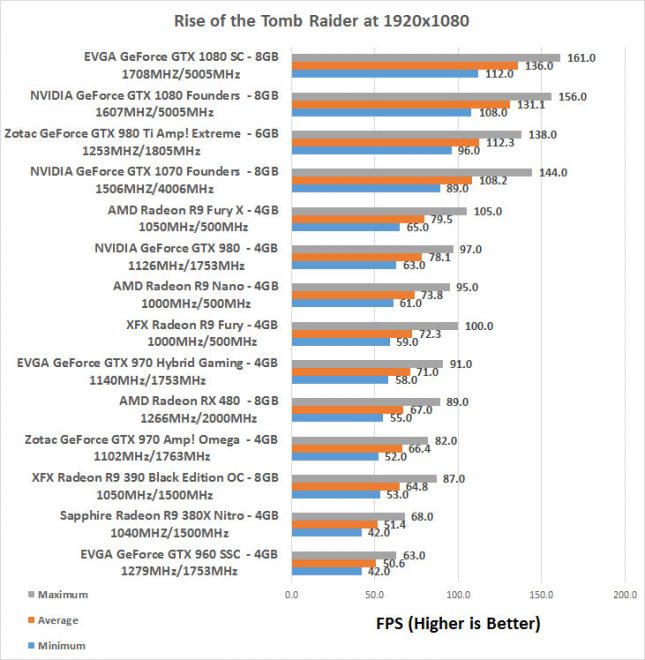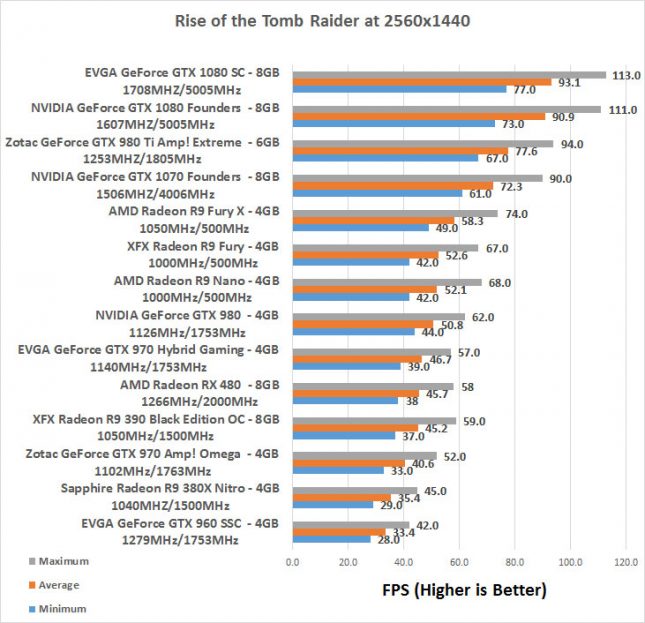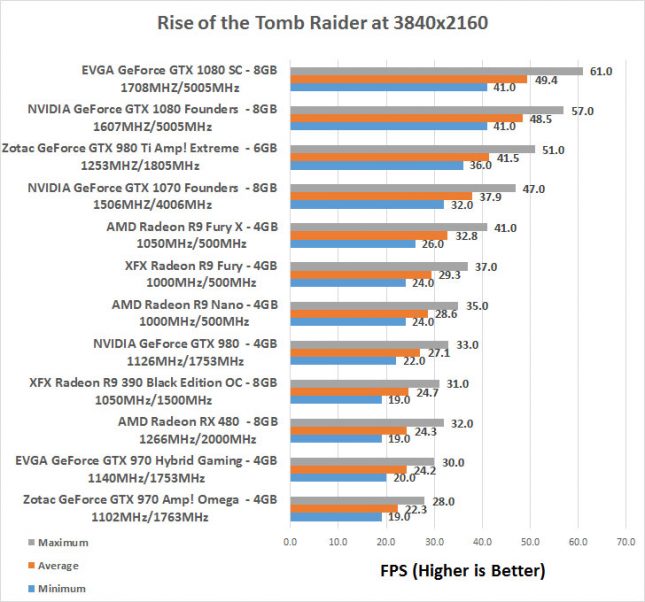AMD Radeon RX 480 Video Card Review – Polaris Arrives
Rise of the Tomb Raider
Rise of the Tomb Raider is a third-person action-adventure video game developed by Crystal Dynamics and published by Square Enix. It is the sequel to the 2013 video game Tomb Raider, which was itself, the second reboot to its series. It was released for Microsoft Windows in January 2016. Players control Lara Croft through various environments, battling enemies, and completing puzzle platforming sections, while using improvised weapons and gadgets in order to progress through the story.
Crystal Dynamics used a proprietary game engine called ‘Foundation’ for Rise of the Tomb Raider and it is able to create some pretty nice looking graphics. We tested Rise of the Tomb Raider with the Very High preset, but then changed the ambient occlusion setting from HBAO+ (an NVIDIA developed feature) to ‘ON’ to have as fair of a match up as we could. We also disabled VSync.
Once we had the graphics and display settings figured out we used FRAPS to manually benchmark a section of the Siberian Wilderness that is about 10% into the game for a couple minutes. Rise of the Tomb Raider does not have a built-in benchmark, so this is one of the only ways you can benchmark this particular game title.
1080P Benchmark Results: Though the margin is minimal, Rise of the Tomb Raider allowed the RX 480 to not only average, but provide a higher maximum and minimum frame rate than the XFX R9 390. We found an average of 67 FPS, or about 2 FPS faster than the XFX R9 390.
1440P Benchmark Results: With the resolution bumped to 21601440, the RX 480 actually hung right with the XFX R9 390 and EVGA GeForce GTX 970, giving an average of 45.7 FPS.
4K Ultra HD Benchmark Results: Rise of the Tomb Raider will bring all cards to their knees at 4K gaming, and the RX 480 averaged about 24 FPS and hung right with the GeForce GTX 970 cards and the Radeon R9 390. It was also only 3 FPS slower than the NVIDIA GeForce GTX 980!

